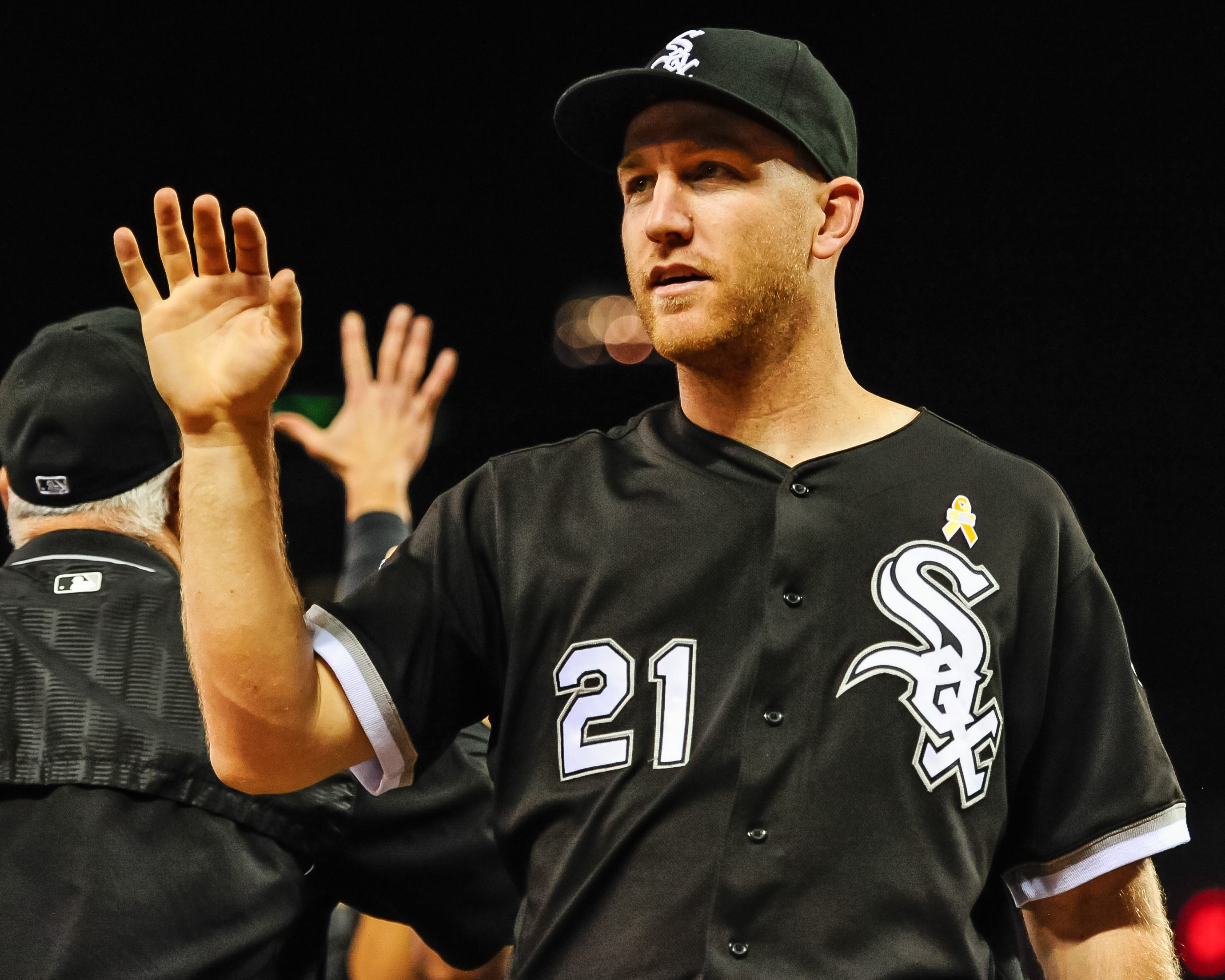Within one glorious week last December, the White Sox managed to make two trades that seemed to signal 2016 would be different. On Dec. 9, Brett Lawrie was obtained from Oakland. Exactly seven days later, a three-team trade that included the Reds and Dodgers brought two-time All-Star Todd Frazier to the South Side. Jose Abreu would finally have another power bat in the order to support him and things were looking up!
But that’s when the moves stopped and the holes in the back half of the lineup were conveniently ignored. And that’s maybe an OK gamble to take if you think everything else will break perfectly, except it’s forgetting a pretty important detail: Frazier is not a game-changing centerpiece.
That’s not to say he’s bad. He isn’t. He’s pretty good. His 3.4 bWAR were the most by a White Sox third baseman since Joe Crede back in 2006. He became only the seventh player in franchise history to hit 40 home runs (Albert Belle, Jermaine Dye, Frank Thomas, Jim Thome, Adam Dunn, and Paul Konerko) and the only one of that septet to have done so at the hot corner. He even managed to pull off the baffling feat of leading the team in both home runs (40) and stolen bases (15 at a 75 percent clip), the first time a player did that for the team in 40 years (Jorge Orta back in 1976). His .239 ISO was good enough to tie Manny Machado and Brad Miller for 10th in the American League! All of this is very good!
So why did it feel so empty? It’s not like the Sox are likely to lose the trade by any major stretch of analysis. Micah Johnson played seven uneventful games for the Dodgers and put up a .677 OPS in the PCL in 120 games. He’s also unlikely to ever garner meaningful playing time in the majors ever again. Frankie Montas pitched 16 innings in seven games between two separate rib resection surgeries before being shipped from Los Angeles to Oakland in a deadline deal. He may one day become a late-inning reliever, but he’ll need his body to stop betraying him before then, and that’s not a guarantee for someone that large (6-foot-2, 255 lbs). Trayce Thompson’s monstrous June (six home runs, .955 OPS) was strong enough to have a lot of fans wringing their hands before he fell back to Earth a month later and wound up missing the second half of the season with a fractured back.
So if losing a potential someday closer and a likely fourth outfielder isn’t the problem, what is? There were quite a few red flags in Frazier’s season. His strong defense has started to noticeably slip, which was hardly unexpected at the age of 30. His dWAR slipped from an average of .8 the past three seasons to merely 0.1 and his UZR slipped below zero for the first time since 2012. His strikeout percentage (24.5) and walk percentage (9.6) both crept up to new career highs, a common sign in older players getting precipitously close to their hard decline phase. And while his 9.6 walk percentage was good enough for 21st in the AL, he only managed a very meager .302 OBP thanks in large part to a career-low .236 BABIP. While that number should regress at least somewhat towards the mean next summer, we are also talking about a guy with a .317 career OBP.
The main reason Frazier’s inaugural season with Chicago felt like something between empty calories and a disappointment was something completely out of his control: a lack of additional weapons on the offensive roster. Other than Adam Eaton’s stellar season (6.2 bWAR), no Sox position player other than Frazier managed to crack that 3 WAR ceiling. Without a miracle season from your pitching rotation, that’s simply not a useful recipe for October baseball.
Lead Photo Credit: Jeffrey Becker-USA TODAY Sports

1 comment on “White Sox Year in Review: Todd Frazier”
Comments are closed.